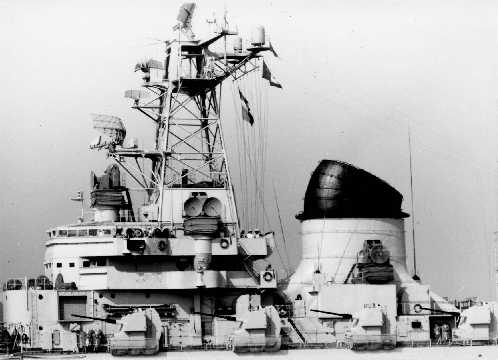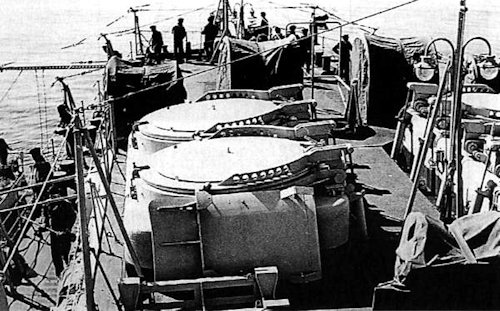Launched in the 1933, the cruiser Garibaldi with a displacement equal to 11.000 tons at full load it was the unit (together with the duke of Abruzzi) bigger than the class Condottieri.
At the end of the conflict it remained in line with the reconstituted Navy, undergoing profound modernization works in the 1958 in the Arsenal of La Spezia.
At that time, the then Minister of Defense Antonio Segni received the Chief of Staff of the Navy, Admiral Pecori-Giraldi, accompanied by the captain of the vessel Glicerio Azzoni. The purpose of the visit was to inform the Minister of the realization, by Azzoni, of an effective and economic system for launching ballistic missiles - of the model Polaris American - that could be embarked on surface naval units.
The project represented something truly innovative in the armaments sector but above all in the political sector.
 In the West, at that time, the only nation to hold the monopoly of the nuclear force was the United States. However other countries pushed to be able to equip themselves with nuclear weapons, first of all France and Great Britain, which had already started design studies.
In the West, at that time, the only nation to hold the monopoly of the nuclear force was the United States. However other countries pushed to be able to equip themselves with nuclear weapons, first of all France and Great Britain, which had already started design studies.
The costs to create a nuclear arsenal at the national level were very high. The most suitable vector to combine cost / effectiveness was identified in the nuclear-powered submarine and intermediate ballistic missile coupled with nuclear warhead.
In fact, the US Navy directed its efforts to build the first SSBN boats in the class George Washington and the intermediate-range missile Polaris.
The Navy decided to take another road, aimed at creating a strategic, missile-capable missile.
The General Staff undertook a fruitful technical and scientific research work. Launch and structural experiences and planning, definition of navigation instruments, identification of the references necessary for guiding telearmi, determination of the complex movements of the ships with respect to the accuracy of the launches, in short, everything concerning the complex missile launch operation directed against a target placed at 4.000 km away.

Within a single year, Azzoni, together with a group of officers and technicians, designed a system of launching from surface ships, in line with the economic possibilities of Italy.
In the 1961 it was installed on board the cruiser Garibaldi (ready to return to service after a real reconstruction) a complex of four wells for housing ballistic missiles. In October of the same year, the testing of the tubes began. In December the launches began, with simulacra of Polaris, with the ship stopped and in January of the 1962 it was the turn of those with the unit in navigation. Obviously all this caught the attention of the Americans, who did not hide any interest so much as to consider boarding the Polaris Italian on the nuclear cruiser Long Beach. Also in Europe, interest was not less, in a perspective of the realization of the NATO Multilateral Force (MLF).
Despite the positive results of the tests, the project was abandoned, both for the high construction costs and for the dissent with the Allies but above all for the United States' refusal to provide technical information relating to the weapons and on-board systems installed on their missile submarines.













